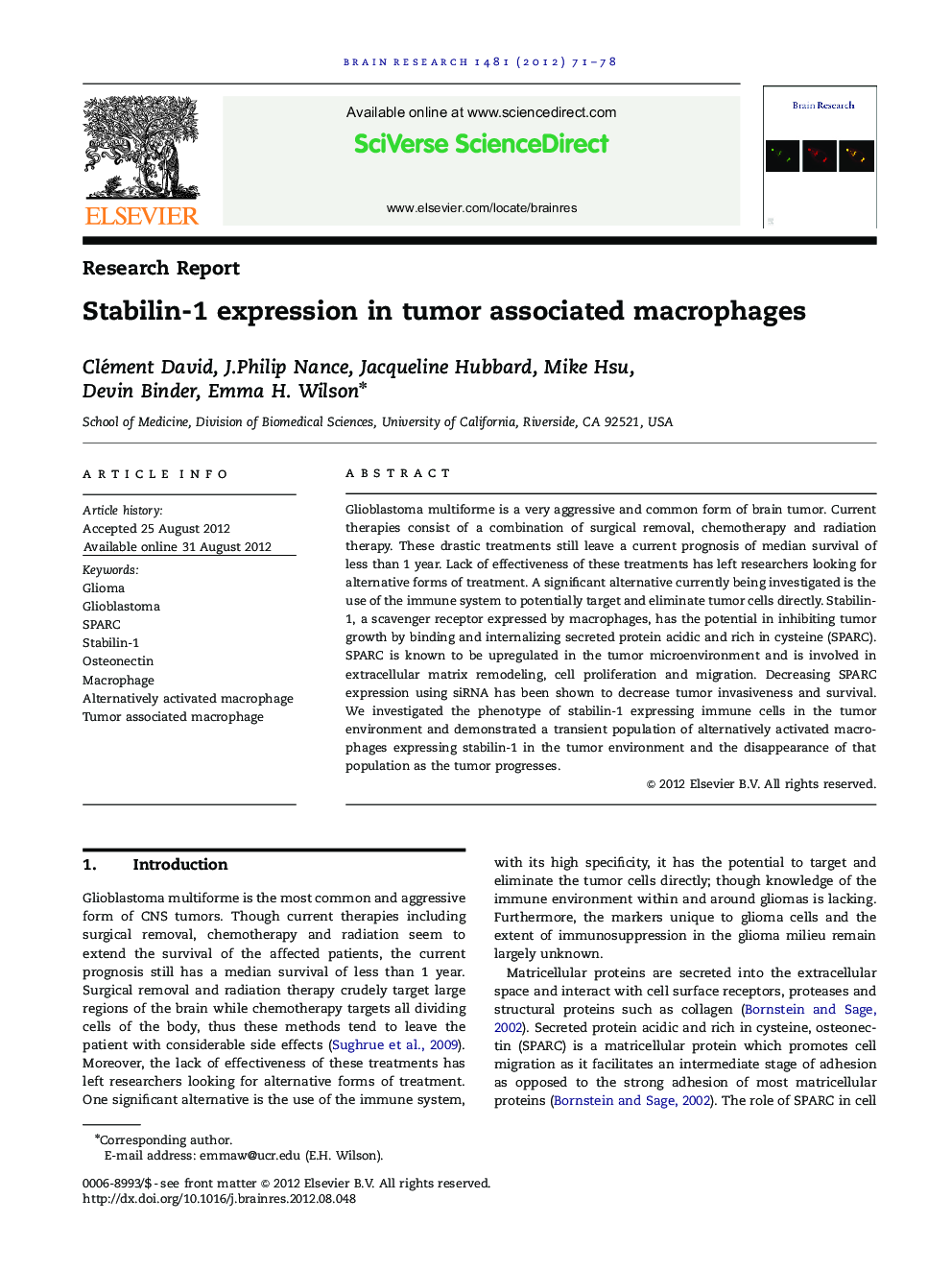| Article ID | Journal | Published Year | Pages | File Type |
|---|---|---|---|---|
| 4324975 | Brain Research | 2012 | 8 Pages |
Glioblastoma multiforme is a very aggressive and common form of brain tumor. Current therapies consist of a combination of surgical removal, chemotherapy and radiation therapy. These drastic treatments still leave a current prognosis of median survival of less than 1 year. Lack of effectiveness of these treatments has left researchers looking for alternative forms of treatment. A significant alternative currently being investigated is the use of the immune system to potentially target and eliminate tumor cells directly. Stabilin-1, a scavenger receptor expressed by macrophages, has the potential in inhibiting tumor growth by binding and internalizing secreted protein acidic and rich in cysteine (SPARC). SPARC is known to be upregulated in the tumor microenvironment and is involved in extracellular matrix remodeling, cell proliferation and migration. Decreasing SPARC expression using siRNA has been shown to decrease tumor invasiveness and survival. We investigated the phenotype of stabilin-1 expressing immune cells in the tumor environment and demonstrated a transient population of alternatively activated macrophages expressing stabilin-1 in the tumor environment and the disappearance of that population as the tumor progresses.
► Stabilin-1 expressed on macrophages, microglia but not T-cells. ► Stabilin-1 expressed on alternatively activated macrophages. ► Stabilin-1 is expressed within the tumor environment. ► Expression of stabilin-1 decreases as the tumor progresses.
